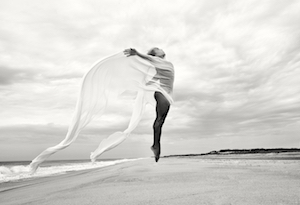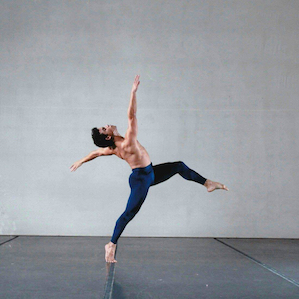Chris Bell
Originally from San Antonio, TX, Chris Bell is a 2008 Lamar University graduate double majoring in Geology and Theatre & Dance. Chris is a four-time American Dance Festival scholarship recipient granting him the opportunity to learn and dance the works of some of the greats: Hanya Holm, Merce Cunningham, Laura Deen, and Twyla Tharp. He continued his education in dance by earning an M.F.A. in Contemporary Dance from Case Western Reserve University and shares his rich experiences as a teacher of dance, theatre, storytelling, creative writing, mindfulness and basically anything performance related to kids through ETD Outreach, Marguis Studios, TADA! Youth Theatres and Marble Collegiate Church (America's Hometown Church). Chris has held the role of resident choreographer for Marble Collegiate Church, The American Theatre of Harlem (2013) and The Mather Dance Collective – a Cleveland based organization which brings people from the community together to create large ensemble works. Higher education master classes include representation at Hunter College, DeSales University and the City Universities of NYC, while professional master classes include Dixon Place, Dance NYC and Pascal Rioult Dance New York.
A frequent collaborator and former choreographic and directorial assistant to Mark Dendy and guest artist and occasional NYC rehearsal director for Gaspard & Dancers. Chris has also had the pleasure of dancing with Ben Munisteri, Pascal Rioult, Maurice Fraga, Regina Nejman and The Cunningham Trust. Chris is currently making work with Raja Feather Kelly as a member of ‘the feath3r theory’ and Eryc Taylor Dance. Chris's personal projects include presenting work in six states and four out of five boroughs in NYC, including evening length works at Dixon Place and Gibney Dance Center with his company @chrisbelldances.
Chris, it is a pleasure to see what you have accomplished since graduating from Lamar University and we are honored you have taken the time to talk with us about your experiences as a person and artist.



With so many professional highlights in just over a decade, what do you consider to be your greatest accomplishments?
Fingers crossed this has yet to come. But for now, I will say that the thing that makes me most excited and anxious is producing my own work with my own company @chrisbelldances (CBD), and that is only possible because I have been lucky enough to be a part of an amazing artistic community with a lot of talented, smart and supportive people. This is CBD's third season. Last season we sold out our shows at Gibney and we have dates in 2021, so I guess there will be a fourth, but dance producer or rather dancemaker is not everything that a company is.
A company is a group of people with a collective goal who value each other. CBD is a group of my favorite artists, telling stories in a way that makes since to us. In addition to valuing each other as humans and artmakers, we value art as a necessary human need. We value each other's time by working hard (and playing hard) and respecting that dance is a job. Money is not everything, but it is a part of what makes a professional a professional. One cannot call themselves a professional dancer or choreographer without getting paid - that is a volunteer or student depending on the circumstances. Too often dance companies and dancemakers exploit/prey on young artists by charging audition fees or company dues and asking dancers to work for free or for way below minimum wage. While I see that less and less as I work up the ladder, it is still happening. CBD is committed to respecting and valuing art and that includes financially compensating artist fairly for their time and talent because that is the change that we want to see in the world.
In what way(s) did your time at Lamar University impact your career or who you are today?
I learned how to be a team player at LU. I was a student at the Texas Academy of Leadership in the Humanities, the high school on campus, and took dance classes while I was there. Then, I went to a very large dance program and due to some family issues returned back to LU, and I honestly felt a little lost. My return to Lamar aligned with Golden Wright's first year as a professor, which was very fortunate for me. He really understood where I was coming from, helped focus my art and challenged me to do better. I might have had the physical skills I needed to succeed when I got to Lamar, but without the emotional and creative education I got from Golden and the rest of the LU Department of Theatre & Dance faculty my life would look a lot different today.
What is your most fond memory or favorite story of your time at Lamar University?
My duet "On Beauty" being selected for the Gala Concert at the American College Dance Festival, which I think until recently was Lamar's first appearance on a Gala Concert at ACDA.
Yes, I believe it was the first student work. Congratulations! What advice would you give current students and young alumni in your field?
“Too much work for not enough pretty” is my way of saying hard is not the same as good. The best things have an ease about them. Complexity is most beautiful when it seems simple.
Also, your passions are your greatest motivators. You'll always be excited about something that you want to do. It might seem cliché, but it is true.
Also, remember "Dance Is Communication." If people don't get it, perhaps it is because you never told them. When you are making work and when you are performing work, always ask yourself questions like… Why am I doing this movement or phrase? What does this movement or phrase mean to me? To the choreographer? To my anticipated audience? How does this advance the main idea of the dance? What is the main idea of the dance? Never be afraid to ask questions. How can you portray an idea or invoke an emotion without having a clear picture of what that idea or emotion is? Once you have that information the work is still not done because you need to figure out how you are going to get there, and that journey, that is the work of the dancer.
A choreographer or director tells you what to do and when to do it. And to do this, they might give qualitative details, or describe a mood, or give a visual or cultural reference. They are not supposed to tell you how to accomplish it. The "How," that is the job of the dancer because we all are individuals. That individuality is what makes you special and the dance interesting. That in my opinion is what the "it-factor" is. People that have "it" usually have an undeniable honesty about how they do things. You can't teach that. You can only help people be more comfortable with who they are. So, if you want to be a better dancer, get to know yourself and how you do things. How you do anything is how you do everything”.
Chris, again, thank you for sharing your experience with the LU Department of Theatre & Dance community here and at large. Do you have any final thoughts or comments?
I am so happy to be an alum of the LU Theatre & Dance program and I am so proud of everything that y'all have accomplished since I graduated. The work that everyone is putting into the future of this program is inspiring and it gives weight to our work as an artist to the LU community at large. It says that Theater and Dance, and the performing arts in general, is not just a throw away, it is an ancient practice that has been around longer than organized science and written language. It is a connection to something innate and universal. It is practiced empathy on a large scale, and that is something that is always needed.
You can find more about Chris and his work by following him @chrisbelldances on Facebook and Instagram, as well as, ChrisBellDances.com.
Photo credits: top - Steven Menendez; middle - Kristina Zaidner; bottom - Joel Houserman